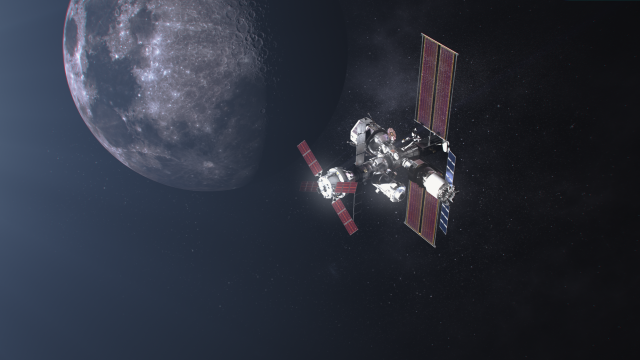NASA signed an arrangement with the Japanese government that extends Japan’s presence on the International Space Station (ISS) until 2030, in addition to contributing components for a future lunar outpost.
During a virtual meeting on Thursday, the two parties signed the Gateway Implementing Agreement, which entails Japan’s contribution to NASA’s lunar Gateway. The Gateway is a planned space station in orbit around the Moon to support the space agency’s Artemis program, which intends on establishing a sustainable presence of astronauts on the lunar surface.
NASA plans on launching the first two modules of the Gateway no earlier than November 2024, according to the space agency. Gateway is an international project involving NASA, JAXA, the Canadian Space Agency (CSA), and the European Space Agency (CSA).
More on this story: What to Know About Lunar Gateway, NASA’s Future Moon-Orbiting Space Station
As part of the agreement, Japan’s space agency JAXA will provide parts for the Gateway’s International Habitation module, including as its Environmental Control and Life Support System (ECLSS), thermal control system functions, and cameras. JAXA will also provide the HTV-XG spacecraft to deliver a logistics resupply mission for Gateway, which is currently scheduled for no later than 2030.
In turn, the agreement also entails that NASA will fly a Japanese astronaut to the Gateway as a crew member on a future Artemis mission. “Japan’s contributions will advance scientific knowledge and protect our brave astronauts exploring the depths of outer space,” Vice President Kamala Harris said in a statement. “And it brings us one step closer to one day having a Japanese astronaut walk on the Moon.” That NASA might land a Japanese astronaut on the lunar surface emerged as a prospect earlier this year but has not yet been confirmed.
NASA has similar agreements with CSA and ESA. Canada is providing a robotic arm for the Gateway in exchange for a seat for a Canadian astronaut on the Artemis 2 mission, which will fly to the Moon but will not land on its surface. ESA has secured itself three seats on future Artemis missions and will contribute two modules to the Gateway.
Japan’s government also announced its intent to extend its participation on the ISS until 2030 in accordance with the space station’s new timeline. Last year, the U.S. Administration extended operations on the ISS until from 2024 to 2030.
“Today we celebrate U.S.-Japan cooperation in space, which has never been stronger,” Harris said.
More: Japanese Company Aims to Land the First Private Moon Mission Later this Month
